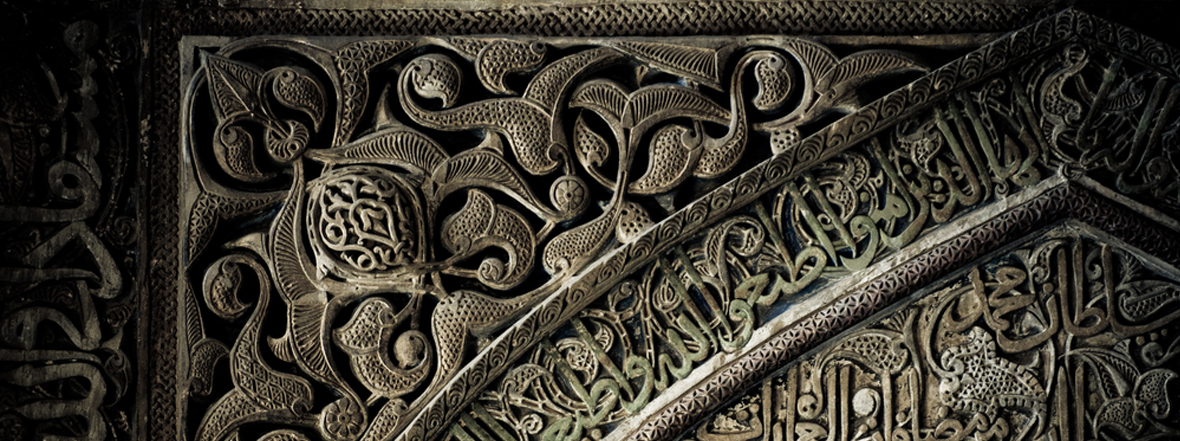As the new Islāmic academic year approaches, students of knowledge are moving into the higher years at every Islāmic institute of learning (dār al-ʿulūm). Many are prone to becoming overwhelmed by the volume of their studies and speed of their teachers’ lectures. At this point, they fall prey to making a ‘rookie mistake’ they later realise and regret. That is, the error of taking inefficient notes.
Every dār al-ʿulūm has a broad range of students taking notes. Some, in the process of attempting to write every word emanating from the teacher’s mouth verbatim, miss the core content of the lecture. Others, on the other hand, give up writing completely and hope to rely on a classmate’s notes. As with everything in life, success lies in creating a balance.
The following is a breakdown of my personal style that I had developed over the years at dār al-ʿulūm. Although it might sound somewhat impractical and rather fiddly, it certainly is of immense benefit.
- Write the dates
As insignificant as it sounds, it helps a lot when trying to find notes from several months ago. It also increases the sentiment of your notes. I used to write the Hijrī date on top and the Gregorian date underneath.
- Write in Arabic
The most common written languages in the average UK dār al-ʿulūm are Arabic, English and Urdu. Of these, Arabic is the most efficient when writing. Urdu uses the most words of the three; hence, it is not the wisest choice for note-making. Although English requires fewer words than Urdu, it uses more than Arabic does. Not only that; it takes longer to write English words than it does to write an Arabic or Urdu word. The word ‘opposite’, for example, takes a considerably longer time to write than its Arabic or Urdu equivalent (ضد).
- Use good pens
My personal favourite was the Cello pens of India (after the pen becomes user-friendly). One of my classmates preferred the Pilot pens, but I found it very rough on the paper – similar to writing on a chalkboard as opposed to a whiteboard. Berol handwriting pens and fountain pens are not a good idea. They are too thick and waste a lot of space, while leaving marks visible at the back of the page. This can make the handwriting illegible when writing on both sides of the paper.
- Take notes – you are not writing a commentary
As nice as it sounds to ‘write down every word the teacher says’, it is not realistic. Frankly, it is a better idea to take notes that will trigger the full lecture in your memory. For example, when the teacher says, “The scholars of tafsīr have various opinions with regard to this verse. The first opinion is…” – this can easily be written as “1) ….” You are less likely to miss out on notes by using this method.
The same can be done in discussions of fiqh: Instead of “According to Imām al-Shāfiʿī, it is permissible to eat the meat of …,” it will suffice to write, “Al-Shāfiʿī: permissible,” as the rest would be fairly obvious when looking at the context of the rest of your notes and the subject of the Qurʾānic verse or ḥadīth under discussion.
- Use a colour-coded key
This is the golden rule. Admitted, this is fiddly, but it is worth the effort in the long term. This is what makes your notes legible and enjoyable to look back at when revising or doing takrār (similar to a seminar at university) in the evening.
I used a total of seven colours on a daily basis:
- Black:
This was used for writing the actual notes, in addition to blue.
- Blue:
Like black, it was for the actual notes. The colour itself did not signify anything; they were used to split up paragraphs for a psychologically easier read. Due to this, I did not need to leave lines for the next paragraph.
- Red:
This was for chapter titles, page/verse/ḥadīth numbers and marking lines to separate different discussions mentioned under the commentary of the same ḥadīth.
- Pink:
This was to write down the relevant word/phrase from the text studied, which the teacher is commentating on.
- Light blue:
This was strictly for translations.
- Green:
This was to draw a line over all names of scholars quoted, and above all numbers that indicate an opinion or position. This makes it easier to refer to the difference of opinions regarding anything you have studied. When the teacher presents his own opinion, I used to indicate to this by drawing a green box around his name/title (I chose ‘Ustādh’).
- Purple:
This was for writing all āyāt and aḥādīth that were quoted by the teacher as evidences or examples, but not in the chapter under study. If the ḥadīth has passed nearby (or is coming), I sufficed by writing the number of the ḥadīth instead of writing the full text, saving time.
- Use a writing pad instead of an exercise book
This depends on the subject and to each individual’s taste. There are pros and cons of using both. For subjects that do not require the student to make many notes, an exercise book will only waste paper. A5 Pukka Pads are ideal.
I would recommend using a display book to put all the papers in. Writing on a pad with spiral binding is frustrating when your hand hits the centre. What I used to do is rip out numerous pages in advance, and pull out three at the start of each lesson (including the last page of that lesson’s notes from the previous day). This way, you can write on both sides of the paper with ease and comfort, without fearing the spiral binding!
One of the advantages of using paper is you get to avoid the hassle of switching exercise books between lessons – you merely change the final paper of both subjects. It is also easier to switch papers if you accidentally write your notes for one lesson in the papers you allocated for another. This mistake is irreversible when writing in exercise books. Also, when classmates ask to borrow your notes, you can give them the relevant pages instead of a whole exercise book.
You can also save time by ripping out extra paper in advance, so you can pull them out instantly when needed. Sometimes, the teacher asks for a piece of paper. You can have the honour of giving him yours.
- Fold your pages in half (vertically)
This is for two reasons: save time and space. Sometimes, your notes for a ḥadīth is not more than a word or two. Moving onto the next line for the next ḥadīth does waste a surprising amount of paper. Also, writing for the full width of the page uses a lot of arm movement and takes longer than writing a few words and moving onto the next line to continue. This is why you may notice many students unintentionally write in the middle of the page and move downwards, wasting space on either side. Folding your papers in half gives you the best of both worlds.
- Write ﷺ properly
Let not the fear of missing notes cause a hindrance to writing the ṣalāwat in full. There are many factors to missing notes, and experience tells me that writing the ṣalāwat in full is not one of them. Yes, there are ways to do this neatly while saving both time and space.
When I was in my third year, I took out time to practise writing the name Muḥammad in the same style as calligraphists have written for centuries. I also took out time to practise writing theṣalāwat in a nice shape, as is commonly found as a symbol in the Arabic fonts used in many Middle-Eastern books. This saves space, adds beauty and, more importantly, gives your heart the opportunity to express its love for the Prophet ﷺ.
May Allāh ﷻ shower His final Messenger with infinite blessings, and enable us to study his teachings, retain the knowledge, apply it into our lives and impart it to others far and wide. Āmīn.
Written by Shaykh Shahin-ur Rahman (Al-Rahma)






